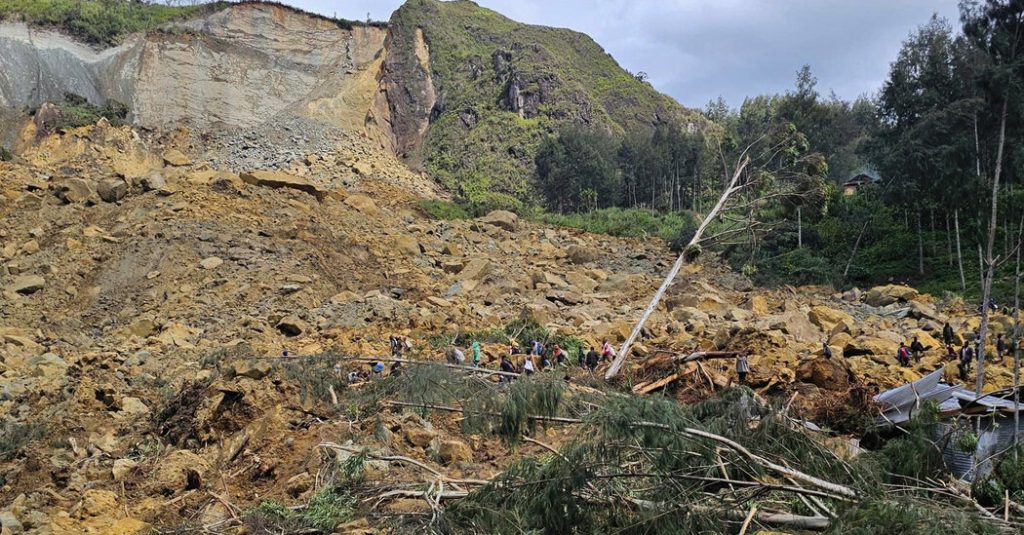A massive landslide in rural Papua New Guinea buried three villages, killing at least three people and leaving hundreds more feared dead. The area, part of the Enga province, was densely populated and a major traffic corridor, leading officials to believe the death toll would be high. The landslide occurred early Friday, catching residents off guard and burying homes under 20 feet of debris. The main thoroughfare, Porgera Highway, was also affected by the landslide.
The affected villages were mainly inhabited by subsistence farmers in the highlands region of Papua New Guinea. Recent heavy rain had made the area prone to landslides, and ongoing wet weather was expected to hamper rescue efforts in the coming days. International organizations and the country’s defense forces were mobilizing to assist in the search and rescue efforts. The sheer size and devastation caused by the landslide were described as of “biblical proportions” by local officials.
Local community leaders estimated that at least 300 people may have been killed in the landslide. The area was a popular transport node, with many people traveling overnight to catch public motor vehicles. There was also a drinking club in the area that was frequented by people from all over the district, potentially adding to the number of casualties. The scale of the disaster was unprecedented in this part of the world, and urgent help and support were being sought to address the humanitarian crisis.
Search and rescue efforts were complicated by unstable rubble and debris in the affected area, making it difficult to locate and extract survivors. Three bodies were found in the rubble on Friday, and five injured individuals, including a child, were treated for their injuries. The landslide, which occurred around 3 a.m., saw huge boulders the size of shipping containers tumbling down, burying homes and blocking the main highway connecting the region. The remote location of the villages further added to the challenges faced by rescue teams.
The incident highlighted the vulnerability of communities in Papua New Guinea to natural disasters such as landslides, especially in areas prone to such events during periods of heavy rainfall. The tragedy also underscored the need for improved infrastructure and emergency response capabilities to deal with such disasters in the region. The international response to the crisis demonstrated the importance of global solidarity and cooperation in times of humanitarian emergencies, with various organizations and military forces stepping in to provide assistance.
The devastating landslide in Papua New Guinea served as a stark reminder of the fragility of human life in the face of powerful natural forces. The loss of hundreds of lives, the destruction of homes, and the disruption of transportation routes brought profound grief to the affected communities. As the search and rescue efforts continued amidst challenging conditions, the immediate focus was on saving as many lives as possible and providing relief to those impacted by the disaster. The tragic event would likely leave a lasting impact on the region and prompt discussions on how to prevent similar incidents in the future.


